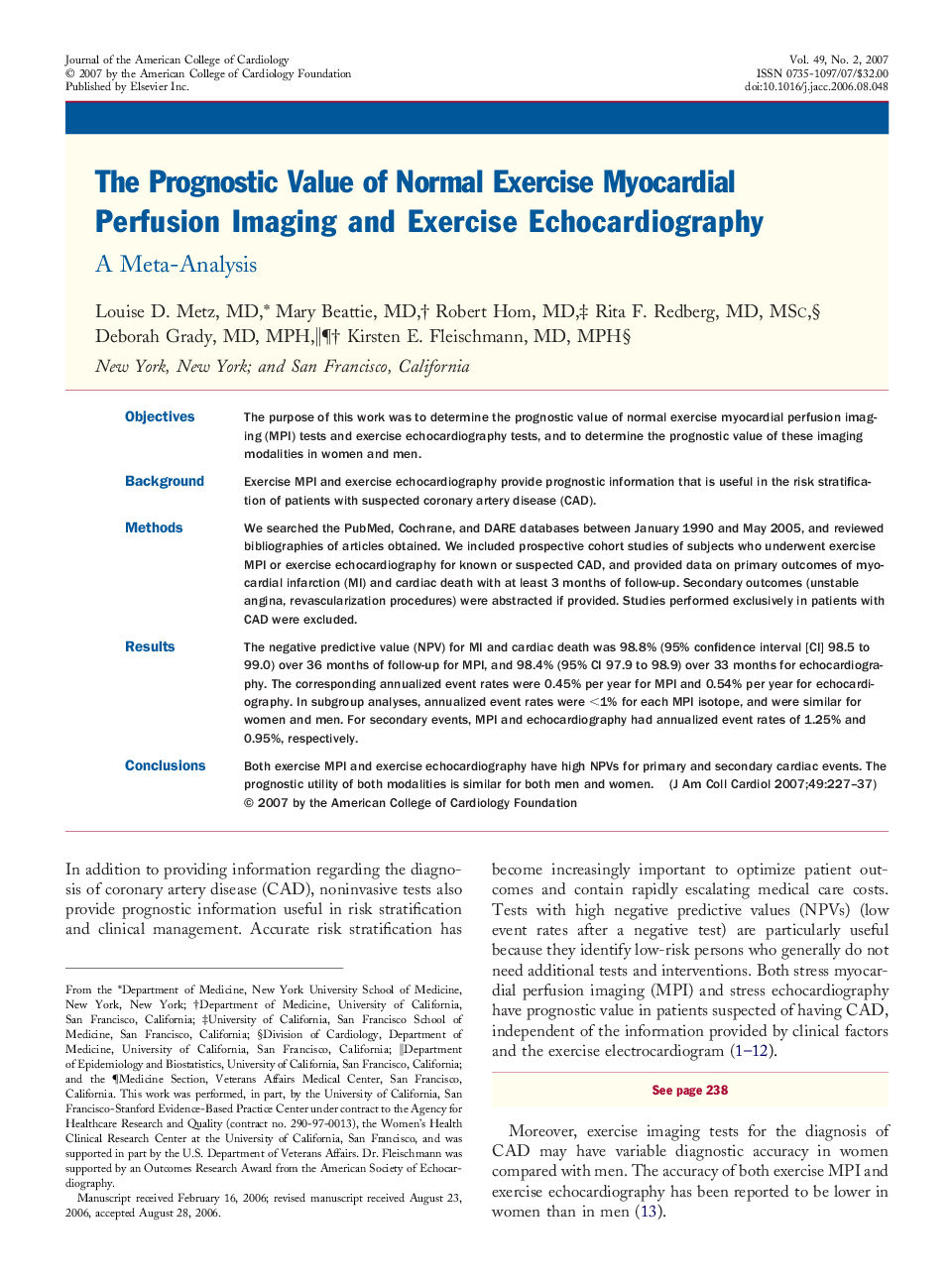| Article ID | Journal | Published Year | Pages | File Type |
|---|---|---|---|---|
| 2954793 | Journal of the American College of Cardiology | 2007 | 11 Pages |
ObjectivesThe purpose of this work was to determine the prognostic value of normal exercise myocardial perfusion imaging (MPI) tests and exercise echocardiography tests, and to determine the prognostic value of these imaging modalities in women and men.BackgroundExercise MPI and exercise echocardiography provide prognostic information that is useful in the risk stratification of patients with suspected coronary artery disease (CAD).MethodsWe searched the PubMed, Cochrane, and DARE databases between January 1990 and May 2005, and reviewed bibliographies of articles obtained. We included prospective cohort studies of subjects who underwent exercise MPI or exercise echocardiography for known or suspected CAD, and provided data on primary outcomes of myocardial infarction (MI) and cardiac death with at least 3 months of follow-up. Secondary outcomes (unstable angina, revascularization procedures) were abstracted if provided. Studies performed exclusively in patients with CAD were excluded.ResultsThe negative predictive value (NPV) for MI and cardiac death was 98.8% (95% confidence interval [CI] 98.5 to 99.0) over 36 months of follow-up for MPI, and 98.4% (95% CI 97.9 to 98.9) over 33 months for echocardiography. The corresponding annualized event rates were 0.45% per year for MPI and 0.54% per year for echocardiography. In subgroup analyses, annualized event rates were <1% for each MPI isotope, and were similar for women and men. For secondary events, MPI and echocardiography had annualized event rates of 1.25% and 0.95%, respectively.ConclusionsBoth exercise MPI and exercise echocardiography have high NPVs for primary and secondary cardiac events. The prognostic utility of both modalities is similar for both men and women.
